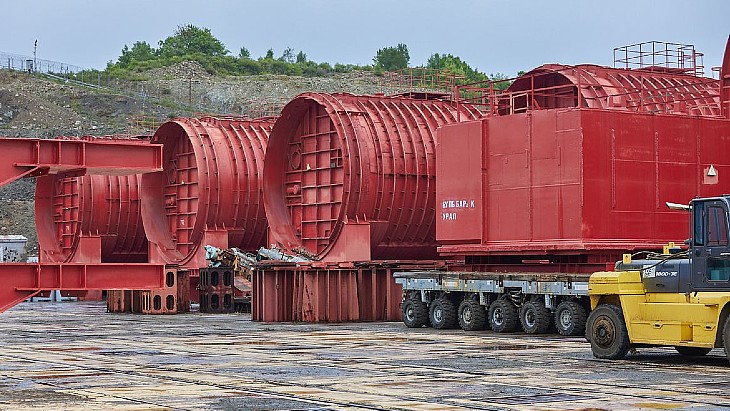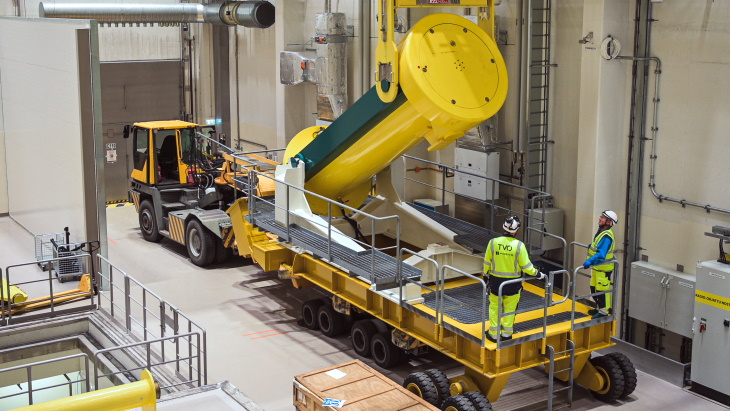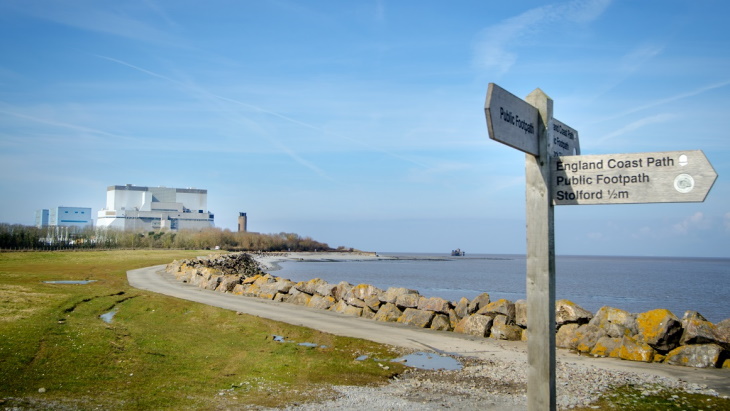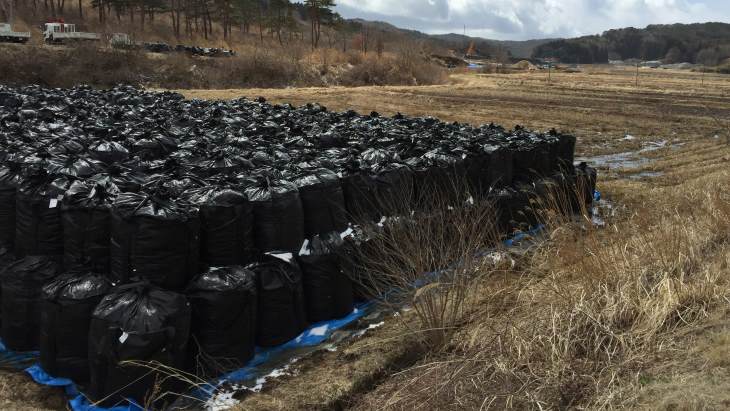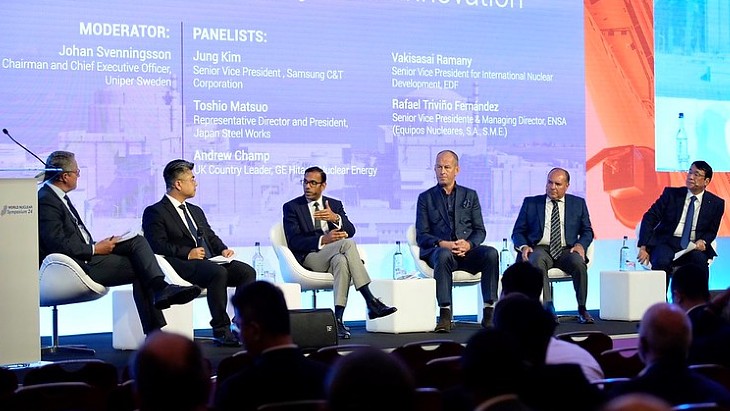Autonomous forklift developed for use in Canadian repository
.jpg)
The NWMO is responsible for designing and implementing Canada's plan for the safe, long-term management of used nuclear fuel. Used fuel will ultimately be placed in a deep geological repository about 500 metres underground, using a series of engineered and natural barriers to contain and isolate the material. As part of this multi-barrier approach, copper-encased canisters of used fuel will be encased in highly compacted "buffer boxes" of bentonite clay before storage in the bedrock of the facility.
The bentonite bricks, each weighing around 8000 pounds (3.6 tonnes) will be conveyed by elevator to the storage level, where they will be picked up and transported along a narrow tunnel before being stacked in two layers by remotely operated autonomous forklift.
This presents several challenges, MEDATech said. These include: making remote operator controls and visibility work properly; detecting distance to the bentonite boxes, which absorb light; picking up brittle, fragile clay boxes without damaging them; navigating a tight tunnel and stacking boxes precisely; and making hydraulics work precisely when forklift movement is slow.
A high-definition camera is used to enable an operator to remotely control the forklift's approach and initial forks insertion, while a laser array enables the distance from each box to be precisely calculated.
Once the forks are inserted, a low-pressure airbag system installed around the forks inflates, holding the bentonite container snugly. An operator then steers the forklift to an orange-painted line on the floor and switches the machine into autonomous mode. From there, the automated drive system takes over to get each box to its final destination.
"Autonomous drive was the logical solution, since precision in driving and offloading is highly challenging; the angle of attack within the tunnel has to be less than three degrees off and boxes need to be stacked within a tolerance of just over half an inch, back to front, and two inches to either side," MEDATech said.
A tolerance of just half an inch - 1.25 centimetres - means the forklift must approach the wall against which containers are stored very slowly and precisely. However, as the speed of the forklift's hydraulic pumps slow down, the temperature increases, the pressure falls and movement can become jerky. This was solved by installing temperature sensors in the charge pump to inform control parameters to open and close hydraulic valves.
The proof-of-concept project was completed in just under four months, including testing, MEDATech said.
Two areas are currently being studied as possible hosts for Canada's geologic repository. Ignace and South Bruce, both in Ontario, have been narrowed down from a list of 21 interested communities through a process launched by NWMO in 2010. The organisation plans to make a site selection in 2023. Construction of the repository is anticipated to begin in 2033, with operations beginning between 2040 and 2045.
